<Back to Index>
- Anatomist and Neurologist Charles Bell, 1774
- Physiologist François Magendie, 1783
PAGE SPONSOR
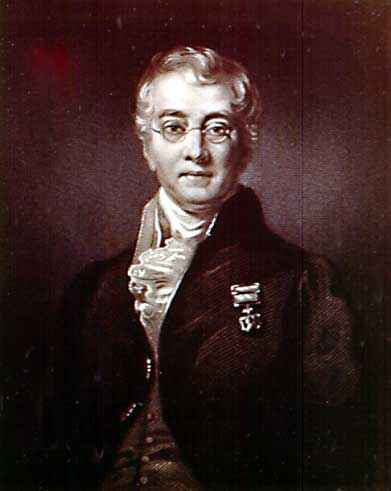
Sir Charles Bell (1774 – 1842) was a Scottish surgeon, anatomist, neurologist and philosophical theologian.
His three older brothers included John Bell (1763 – 1820), also a noted surgeon and writer; and the advocate George Joseph Bell (1770 – 1843).
Charles Bell was born in Edinburgh in November 1774, a son of the Rev William Bell, a clergyman of the Episcopal Church of Scotland, who died in 1779 when Bell was a small child. Bell grew up in Edinburgh, attending the High School (1784-8) and Edinburgh University, where he took his medical degree in 1798. He conducted his surgical training as assistant to his elder brother John Bell.
He and his brother had remarkable artistic gifts, and together they taught anatomy and illustrated and published two volumes of A System of Dissection Explaining the Anatomy of the Human Body. Bell's career was characterized by the accumulation of quite extraordinary honors and achievements - and by acrimonious disputes unusual even by the standards of medicine during the Regency.
Shortly after his graduation Bell was admitted to the Royal College of Surgeons in Edinburgh, where he operated and taught anatomy. He and his brother published two additional volumes of their anatomical treatise in 1802 and 1804. Some aspects of his success, however, led to the jealous opposition of local physicians, and he was barred from practice at the Edinburgh Royal Infirmary. He then moved to London in 1804, where he set up a private surgery and school of anatomy. From 1812 to 1825, together with his brother, Bell ran the Great Windmill Street School of Anatomy, which had been founded by the anatomist William Hunter (1718 – 1783). He also served as a military surgeon, making elaborate recordings of neurological injuries at the Royal Hospital Haslar and famously documenting his experiences at Waterloo in 1815, where the anatomist Robert Knox commented very negatively on Bell's surgical abilities; (the mortality rate of amputations carried out by Bell ran at about 90%). Bell was instrumental in the creation of the Middlesex Hospital Medical School, and became, in 1824, the first professor of Anatomy and Surgery of the College of Surgeons in London. In 1829, the Windmill Street School of Anatomy was incorporated into the new King's College London. Bell was invited to be its first professor of physiology, but resigned shortly afterwards. Wishing to return to Scotland, he accepted in 1836 the position of Professor of Surgery at the University of Edinburgh.
Bell died in the Midlands, traveling to London, in 1842.
Bell was elected a Fellow of the Royal Society of Edinburgh on 8 June 1807, on the nomination of Robert Jameson, William Wright and Thomas Macknight. He served as a Councillor of the RSE from 1836-9.
He was elected a Fellow of the Royal Society of London on 16 November 1826, was knighted in 1831 and, like Sir Richard Owen, was elected a foreign member of the Royal Swedish Academy of Sciences.
Charles Bell was a prolific author. Shortly after arriving in London, he set his sights on the Chair of Anatomy at the Royal Academy, and, in furtherance of this career goal, he published Essays on The Anatomy of Expression in Painting (1806), later re-published as Essays on The Anatomy and Philosophy of Expression in 1824. In this work, Bell followed the principles of natural theology, asserting the existence of a uniquely human system of facial muscles in the service of a human species with a unique relationship to the Creator. After the failure of his application, (Sir Thomas Lawrence, later President of the Royal Academy, described Bell as "lacking in temper, modesty and judgement"), Bell turned his attentions to the nervous system.
Bell published his detailed studies of the nervous system in 1811, in his privately circulated book An Idea of a New Anatomy of the Brain. He described his experiments with animals and later emphasized how he was the first to distinguish between sensory and motor nerves. This essay is considered by many to be the founding stone of clinical neurology. However, Bell's original essay of 1811 did not actually contain a clear description of motor and sensory nerve roots as Bell later claimed, and Bell seems to have issued subsequent incorrectly dated revisions with subtle textual alterations. Charles Darwin (and others) found in Bell's published views more evidence of his personal ambitions than of proper scientific enquiry. Bell's studies on emotional expression, flawed though they were, played a catalytic role in the development of Darwin's considerations of the origins of human emotional life; and Darwin very much agreed with Bell's emphasis on the expressive role of the muscles of respiration. Darwin detailed these opinions in his The Expression of the Emotions in Man and Animals (1872), written with the active collaboration of the psychiatrist James Crichton - Browne.
Nevertheless, Bell was one of the first physicians to combine the scientific study of neuroanatomy with clinical practice. In 1821, he described in the trajectory of the facial nerve and a disease, Bell's Palsy which led to the unilateral paralysis of facial muscles, in one of the classics of neurology, a paper to the Royal Society entitled On the Nerves: Giving an Account of some Experiments on Their Structure an Functions, Which Lead to a New Arrangement of the System.
He also combined his many artistic, scientific, literary and teaching talents in a number of wax preparations and detailed anatomical and surgical illustrations, paintings and engravings in his several books on these subjects, such as in his book Illustrations of the Great Operations of Surgery: Trepan, Hernia, Amputation, Aneurism, and Lithotomy (1821). He wrote also the first treatise on notions of anatomy and physiology of facial expression for painters and illustrators, titled Essays on the Anatomy of Expression in Painting (1806). In 1833 he published the fourth Bridgewater Treatise, The Hand: Its Mechanism and Vital Endowments as Evincing Design.
A number of discoveries received his name: Bell's (external respiratory) nerve: The long thoracic nerve. Bell's palsy: a unilateral idiopathic paralysis of facial muscles due to a lesion of the facial nerve. Bell's phenomenon: An upward movement of the eye and the eyelid which occurs when a person affected with Bell's paralysis tries to close the eye. Bell's spasm: Involuntary twitching of the facial muscles. Bell - Magendie law or Bell's Law: States that the anterior branch of spinal nerve roots contain only motor fibers and the posterior roots contain only sensory fibers.
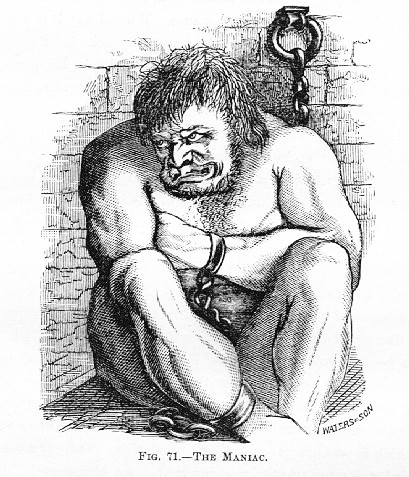
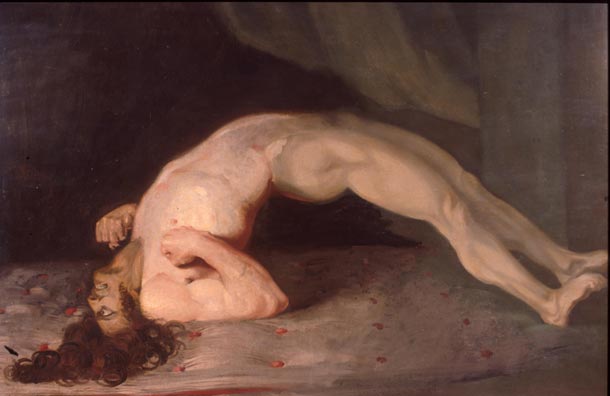
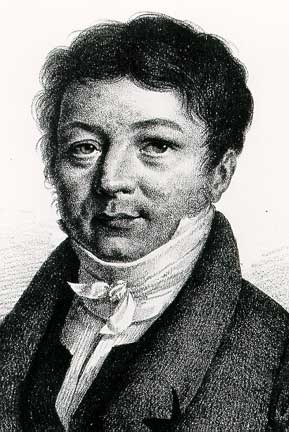
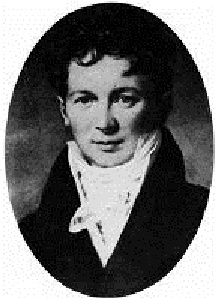
François Magendie (6 October 1783 – 7 October 1855) was a French physiologist, considered a pioneer of experimental physiology. He is known for describing the foramen of Magendie. There is also a Magendie sign, a downward and inward rotation of the eye due to a lesion in the cerebellum. Magendie was a faculty at the College of France, holding the Chair of Medicine from 1830 to 1855 (he was succeeded by Claude Bernard, who worked previously as his assistant).
His most important contribution to science was also his most disputed. Contemporaneous to Sir Charles Bell, Magendie conducted a number of experiments on the nervous system, in particular verifying the differentiation between sensory and motor nerves in the spinal cord, the so-called Bell - Magendie law. This led to an intense rivalry, with the British claiming that Bell published his discoveries first and that Magendie stole his experiments. The intensity of this scientific rivalry perhaps can only be compared to that between Isaac Newton and Robert Hooke.
Magendie was also a notorious vivisector, shocking even many of his contemporaries with the live dissections that he performed at public lectures in physiology. Richard Martin, an Irish MP, in introducing his famous bill banning animal cruelty in the United Kingdom, described Magendie's public dissection of a greyhound, in which the beast was nailed down ear and paw, half the nerves of its face dissected then left overnight for further dissection, calling Magendie a "disgrace to Society." There was a belief among British physicians, even those who defended animal experimentation, that Magendie purposely subjected his experimental animals to needless torture. A Quaker once visited him, questioning him about vivisection; according to Anne Fagot - Largeau's inaugural lesson at the College of France, he responded with much patience, arguing on the reasons of animal experimentation. Besides drawing sharp criticism from contemporaries in both Britain and France, later scientists critical of Magendie's methods included Charles Darwin and Thomas Henry Huxley. He was also a major impetus to the antivivisection and vivisection reform movements, with Albert Leffingwell dedicating a chapter of his book An Ethical Problem to him.
In 1831, he was elected a foreign member of the Royal Swedish Academy of Sciences.